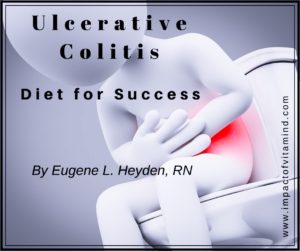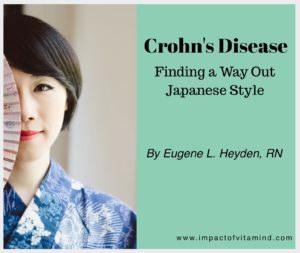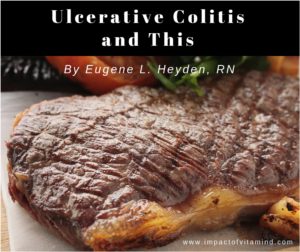Have You Fed Your Pathogens Today?

Last update: 12-05-23
By Eugene L. Heyden, RN
When it comes to the Western diet, it seems that there are others besides you (and me) who love this diet. There are teeming multitudes of others who love it, too. They are the pathogens that reside within. What you eat is what they eat. And they can’t seem to get enough of the Western diet.
The Western diet is evil on so many levels. You have probably heard of saturated fat and cholesterol, and you may be trembling and living in fear. I would be trembling and living in fear of other things if I were you. In reality, a reasonable intake of saturated fat and cholesterol is not all that bad. Go to Africa and ask the Maasai. Their native diet is composed of approximately 70% animal fats and proteins—blood, meat, and milk products—and they do just fine . . . until they move to the city and eat their first Twinkie. Then it’s all downhill from there. So, I think a little saturated fat and cholesterol tucked into in a healthy diet will not destroy you. However, Twinkie after Twinkie may destroy you. Studies are underway.
With so much attention directed towards saturated fat and cholesterol, seldom is attention directed at what the Western diet does for the pathogens in our life. Here’s a little secret: It feeds them and allows their numbers to increase. And at the same time, it unbalances the composition of our normal bacterial flora, allowing some bacterial families to dominate and greatly outnumber other bacterial families, many of which would otherwise provide us with positive health benefits. This unfortunate turn of events, called dysbiosis, greatly favors the occurrence of a wide variety of diseases including Crohn’s disease and ulcerative colitis, rheumatoid arthritis, cancer, even obesity. (Antibiotics do this, too—by wiping out multitudes of friendly bacterial and giving disruptive bacteria an opportunity to succeed).
So, what are these evils found in the Western diet that we should tremble and live in fear of? In this article we will focus our attention on two evils associated with a diet most harmful, a diet most unfortunate, a diet out to destroy.
Dietary omega-6 excess
“An increase in IBD [Crohn’s and ulcerative colitis] has been associated with increased dietary intake of omega-6 fatty acids in humans, while IBD patients remain in remission longer when dietary intake of omega-3 fatty acids increases.” ~ Ghosh et al., 2013
If you want to limit bacterial diversity while selecting and feeding the pathogens in your life—and do a very good job of it—why not rely on the omega-6 polyunsaturated fatty acids (PUFAs) in the Western diet to provide this service? They are more than abundant in the Western diet, and so easy to find. The omega-6 fatty acids literally “saturate” the Western diet and greatly outnumber the generally anti-inflammatory omega-3 fatty acids also found in this diet. Our hunter–gatherer ancestors consumed comparatively little in the way of omega-6 fatty acids, whereas we modern folks consume perhaps 10 to 50 times more omega fatty acids than those who once roamed the earth single-mindedly looking for anything they could find to eat. (Kiliannan et al., 2015)
The omega-6 fatty acids are necessary for good health, but not in the amounts provided by the Western diet. And there is a price to pay for this excess. One study conducted in a Danish population, “. . . found that excessive consumption of omega-6 PUFA increases ulcerative colitis by 30%; whereas consumption of docosahexaenoic acid, an omega-3 fatty acid, reduced the disease burden by 77%.” (Brown et al., 2012)
Surprisingly, one thing that an excess of dietary omega-6 fatty acids do is promote dysbiosis. In other words, they allow bad bacteria to thrive. It feeds them and allows them to dominate. We know this from laboratory studies in mice fed two commonly used oils high in the omega-6 fatty acids, namely corn oil and canola oil.
“Dietary corn oil increases the opportunistic pathogens . . . whereas fish oil supplementation reduces these species and increases beneficial bacterial (Lactobacillus) which corresponds to alter their gene expression against higher levels of oxidative status in the gut. Canola oil alters the GI microbiota [bacterial flora] similar to the corn oil group.” (Rajendiran, 2012, emphasis added)
I suppose I need to drive home the message that excessive omega-6 fatty acids create dysbiosis. I believe I can do this most effectively by sharing the following two quotations:
“Diets rich in omega-6 PUFAs cause blooms of pathobionts [pathogenic bacteria] but isocaloric diets [diets containing a similar number of calories] supplemented with omega-3 PUFA can reverse microbial alterations in mice.” (Chan et al., 2013)
“Overall, while omega-6 fatty acids induced the growth of microbes known to induce pro-inflammatory responses, omega-3 fatty acid supplementation reversed this and in parallel enriched beneficial bacteria.” (Ghosh et al., 2013)
While the above two quotations reflect the findings of studies on mice, it is more than reasonable to conclude that this same sort of thing happens in humans, too. It is almost impossible for something as negative and disease producing as dietary omega-6 excess not to create an imbalance in the bacterial composition in the gut. Not surprisingly, both dysbiosis and omega-6 excess (and a relative omega-3 deficiency) are risk factors for Crohn’s and ulcerative colitis. And when dysbiosis exists, you get to feed more pathogens. It’s that simple. In fact, with the omega 6s in excess, you make more pathogens! Then you get to feed them, billions of them. One study found that omega-6 excess alters the nature of tissues and cells, and this alteration creates a specific host response that favors dysbiosis and allows pathogenic bacteria to thrive (Kaliannan et al., 2015).
So, although you may not be feeding pathogens directly by consuming the omega-6 fatty acids in excess, by this means you are creating more pathogens to feed. And I know exactly what you are feeding them. You are feeding them iron.
Dietary iron excess—food for pathogens
“Accumulating evidence indicates that excess of unabsorbed iron that enters the colon lumen causes unwanted side effects at the intestinal host–microbiota interface.
“Notably, accumulating evidence suggests that unabsorbed iron can stimulate growth and virulence of bacterial pathogens in the intestinal environment.” ~ Kortman et al., 2014
In my book on Crohn’s, I spend a great deal of time warning of the dangers of iron, and how its excess, so commonplace in our society, leads to disease. No one else seems to be telling you this, so I guess it’s up to me. And why do I raise the alarm? Because iron feeds and strengthens the pathogens in your gut. It increases their numbers. It makes them more aggressive and more likely to offend.
“In the colonic lumen, large amounts of iron are regularly present, mostly constituted by excess dietary iron not absorbed in the duodenum (the major site of iron absorption). This is illustrated by the high concentration of iron found in feces of British adults on a standard Western diet and in weaning infants fed with complementary solid foods.
“Besides the effects or iron on the gut microbiota, which may cause a shift towards a more pathogenic profile and an increase in virulence of enteric pathogens, iron may also directly exert unfavorable effects on the gut epithelium most likely by the promotion of redox stress.” (Kortman et al., 2014, emphasis added)
Here’s the deal: The Western diet is saturated with iron. It is in supplements. It is in iron-fortified foods. It is in meat. It is in our water supply (Aamodt et al., 2008). There is just too much of it around. Silly society! But our society is always screwing things up, so it is very easy to experience iron excess along with its harmful effects.
Let’s end our little discussion on iron with a string of quotations:
“In a laboratory study, the researchers found that human intestinal cells with excess iron were more susceptible to attack by bacteria that caused infection of the small intestine. The study suggests that enriching breakfast foods and other foods with high doses of iron—a nutritional strategy that has been widely adopted to eliminate iron deficiency—could be causing other health problems.
“The scientists found that cells containing high levels of iron were more easily invaded by the bacteria.
“’Instead of fortifying everyone’s diet with excess iron, we should diagnose iron deficiency and then provide supplemental iron only to those who need it.’” —Quoting Dr. Mark Failla (Ohio State Research News, 2001)
“Ultimately, iron use allows for greater microbial growth and an increased capacity of the bacteria to adhere and possibly disseminate to distal sites to cause infection.” (Radek, 2010)
(One final quotation—read carefully!)
“Iron is an important factor for the growth of bacteria and their expression of virulence. When the level of iron increases, the balance between the quantities of different bacteria species in the gut is altered, depending on their ability to compete for iron. The interaction between bacteria and host tissue will also be altered when iron levels are enhanced, including the ability for the bacteria to express virulence.” (Aamodt et al., 2008, emphasis added)
Closing remarks
You’ve heard of the Mediterranean diet, right? And how it is good for you, right? One of the reasons why the Mediterranean diet is good for you is because it is not fueled by the omega-6 fatty acids. Instead, it is fueled by olive oil—a mix of fatty acids that includes some omega-6s and some omega-3s but is mostly composed of an anti-inflammatory omega-9 fatty acid called oleic acid. And this is nice: The Mediterranean diet doesn’t mind letting you have a reasonable amount of saturated fat. So, in order to lower your intake of the omega-6s, consider using olive oil and real butter in your food preparation instead of using seed oils and margarine. In addition, avoid the use of vegetable oils and all-vegetable shortening as a measure to avoid saturated fat. Their use will simply increase your consumption of the omega-6 fatty acids (a feed the pathogens within). And in order to bring your omega-6/omega-3 ratio into a more healthful balance, consider adding more omega-3s to your diet. You can do this by making wise dietary choices. Word of warning: Be cautious with the use of fish oils (high in the omega-3s). Problems can occur. The omega-3s are so effective at reducing inflammation, they could interfere with the body’s defense against bacteria should an infectious process be taking place (Ghosh et al., 2013). Your doctor will advise.
As far as the iron excess issue discussed, weaning yourself off of factory prepared iron-fortified foods is a good call, as is limiting the consumption of meat. See my post Crohn’s Disease: Finding a Way Out Japanese Style. If you have Crohn’s or ulcerative colitis, you should definitely be monitored for anemia. Anemia in this setting is usually not from low iron availability. It is typically due to a block on the absorption of iron.
As I bring this article to a close, I have to say this: It is my strong belief that the continued consumption of excess omega-6 fatty acids, and the intake or iron in excess of one’s need, are big mistakes made by many individuals in their personal battle against Crohn’s or against ulcerative colitis. But by now, I guess you have figured this out.
Note: In the quotations used in this presentation, I took the liberty of changing the terminology used in order to provide consistency and to use terms you are more likely to be familiar with. Hence, if an author used n-6 or v-6 to refer to the omega-6 fatty acids, I inserted omega-6 in its place. I also dropped the clarifying acronym PUFA (polyunsaturated fatty acid) at times because I felt this abbreviation was unnecessary for the conversation. You can thank me later.
Related posts (Click on image to open)
References
Aamodt G, Bukholm G, Jahnsen J, Moum B, Vatn MH 2008 The Association Between Water Supply and Inflammatory Bowel Disease Based on a 1990–1993 Cohort Study in Southeastern Norway. Am J Epidemiol 168:1065–1072
Brown K, DeCoff, D, Molcan E, Gibson DL 2012. Diet-Induced Dysbiosis of the Intestinal Microbiota and the Effects on Immunity and Disease. Nutrients 4(8):1095–1119.
Chan YK, Estaki M, Gibson DL 2013. Clinical Consequences of Diet-Induced Dysbiosis. Annals of Nutrition and Metabolism 63(Suppl. 2):28–40.
Kilian K, et al. 2015 A Host–Microbiome interaction Mediates the Opposing Effects of Omega-6 and Omega-3 fatty acids on Metabolic Exdotoxemia. Sci Rep 5, 11267: doi: 1038/srep112767
Kiliannan K, Wang B, Li XY, Kim KJ, Kang JX 2015. A Host-Microbiome Interaction Mediates the Opposing Effects of Omega-6 and Omega-3 Fatty Acids on Metabolic Endotoxemia. Scientific Reports 5.
Kortman G AM, Raffatellu M, Swinkels DW, Tjalsma H 2014 Nutritional Iron Turned Inside Out: Intestinal Stress from a Gut Microbial Perspective. FEMS Microbial Rev 38:1202–1234
Ohio State Research News 2001 Excess Iron Intake Increases Risk of Intestinal Infections, Study Suggests. http://researchnews.osu.edu/archive/iron.htm
Radek KA 2010 Antimicrobial Anxiety: The Impact of Stress on Antimicrobial Immunity. Journal of Leukocyte Biology; August; 88:1–15
Rajendiran E 2012 The Differential Effects of Omega-6 and Omega-3 Polyunsaturated Fatty Acids on Intestinal Microbial Ecology and Host Redox Responses. Master’s Degree Thesis; University of British Columbia.
Disclaimer: This article is presented solely for informational purposes. The information contained herein should be evaluated for accuracy and validity in the context of opposing data, new information, and the views and recommendations of a qualified health care professional, and is not to be substituted for professional judgment and guidance or to provide reason to neglect or delay appropriate medical care. It is the reader and reader only who bears the responsibility for any actions that could be construed as being a response to the information contained herein. The statements and opinions expressed by the author have not been reviewed or approved by the FDA or by any other authoritative body, nor is the author endorsing any product or specific therapy. This article is offered to the reader to broaden his or her understanding of the issues discussed and to help identify options that may be suitable for the individual to pursue, on behalf of self or others, under approval and direction of a qualified physician. The author and publisher offer no guarantees of the accuracy or validity of the quotations incorporated into this article or the accuracy or validity of the information presented by the resources that are herein recommended.
Copyright © 2016-2023 Eugene L. Heyden, RN
All Rights Reserved





